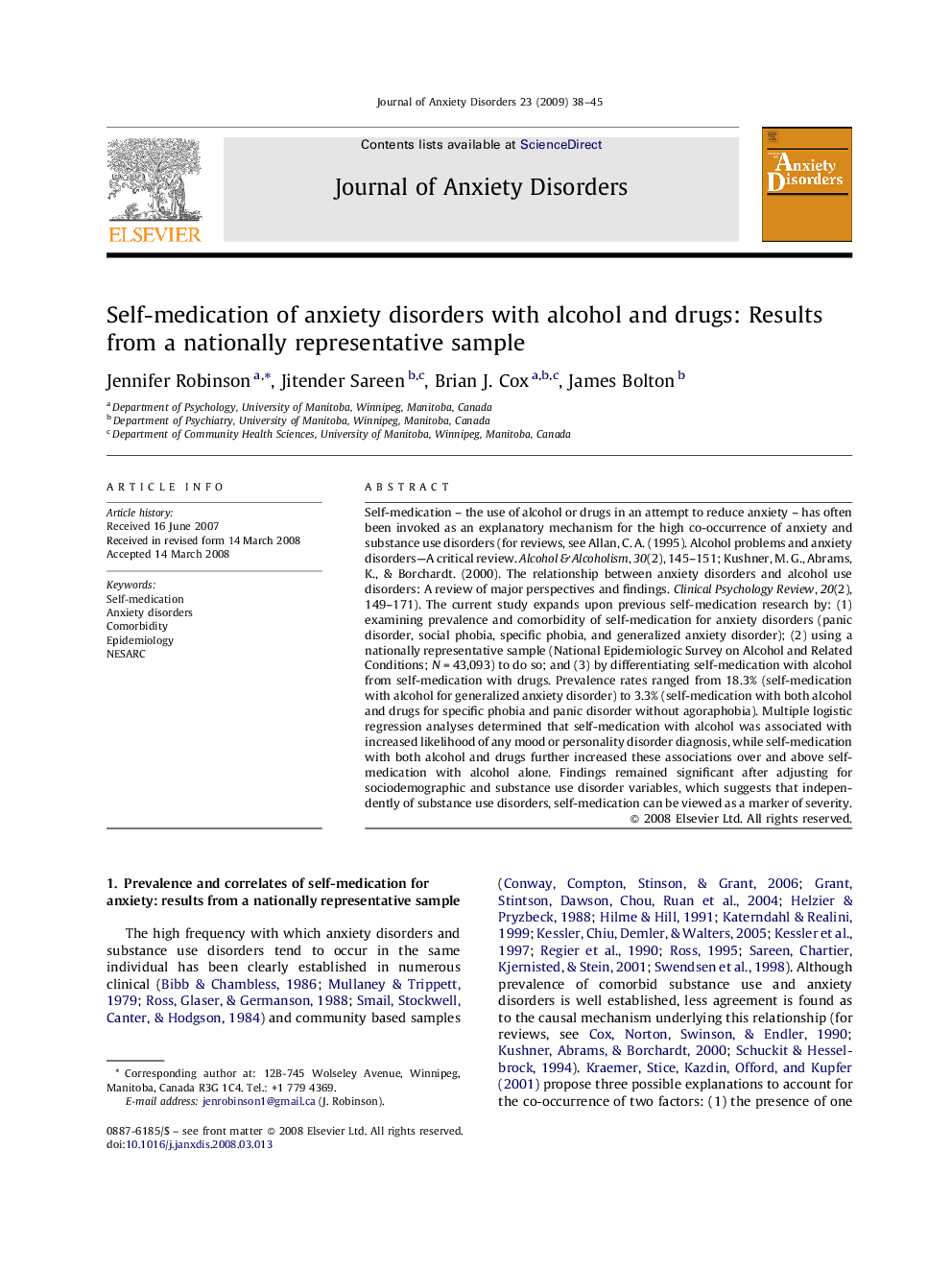| Article ID | Journal | Published Year | Pages | File Type |
|---|---|---|---|---|
| 910077 | Journal of Anxiety Disorders | 2009 | 8 Pages |
Self-medication – the use of alcohol or drugs in an attempt to reduce anxiety – has often been invoked as an explanatory mechanism for the high co-occurrence of anxiety and substance use disorders (for reviews, see Allan, C. A. (1995). Alcohol problems and anxiety disorders—A critical review. Alcohol & Alcoholism, 30(2), 145–151; Kushner, M. G., Abrams, K., & Borchardt. (2000). The relationship between anxiety disorders and alcohol use disorders: A review of major perspectives and findings. Clinical Psychology Review, 20(2), 149–171). The current study expands upon previous self-medication research by: (1) examining prevalence and comorbidity of self-medication for anxiety disorders (panic disorder, social phobia, specific phobia, and generalized anxiety disorder); (2) using a nationally representative sample (National Epidemiologic Survey on Alcohol and Related Conditions; N = 43,093) to do so; and (3) by differentiating self-medication with alcohol from self-medication with drugs. Prevalence rates ranged from 18.3% (self-medication with alcohol for generalized anxiety disorder) to 3.3% (self-medication with both alcohol and drugs for specific phobia and panic disorder without agoraphobia). Multiple logistic regression analyses determined that self-medication with alcohol was associated with increased likelihood of any mood or personality disorder diagnosis, while self-medication with both alcohol and drugs further increased these associations over and above self-medication with alcohol alone. Findings remained significant after adjusting for sociodemographic and substance use disorder variables, which suggests that independently of substance use disorders, self-medication can be viewed as a marker of severity.
